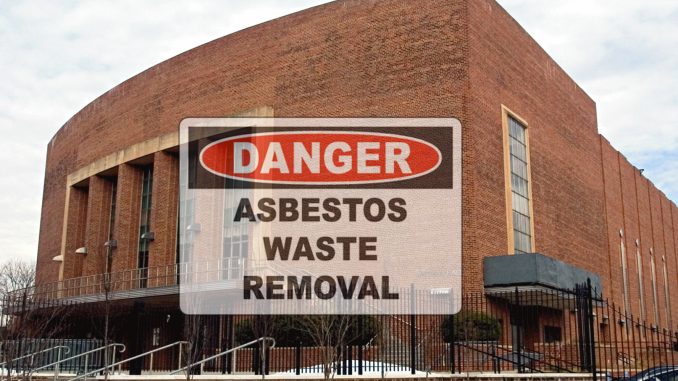
By Gabriela Flores
Two rooms in Whitman Hall were retiled early this January after a flood loosened their previous flooring material during Hurricane Ida in 2021. The retiling comes after a hired environmental consultant recently confirmed the presence of asbestos, thin fibers that could cause diseases, in the tiles and flooring adhesive of Whitman B024.
“As tiles became loose, Facilities installed Masonite boards over the tile to prevent further damage until [asbestos] abatement and repairs could be scheduled,” Carrie Sadovnik, the director of BC’s Office of Environmental Health and Safety, wrote in a statement to The Vanguard. Sadovnik explained that the previous flooring was made up of vinyl asbestos tiles (VAT) and an adhesive called mastic, which are common materials for buildings built before 1980. VAT and mastic cannot easily pulverize and release hazardous airborne fibers, making them legal to use despite containing asbestos. Since Whitman B052 was built during the same time as B024, its flooring material was assumed to contain asbestos as well.
“As of early January 2023, all VAT and associated mastic have been removed from these two rooms, and new tile has been installed,” wrote Sadovnik. “EHS monitors the condition of VAT across the campus and prioritizes repair and/or removal using licensed abatement contractors.”
No other rooms in the Tow Center were identified as needing asbestos abatement, or removal of the hazardous material, during a damage assessment conducted after Ida in 2021.
Though exposure to asbestos could cause diseases such as lung cancer and mesothelioma, VAT and similar building materials that contain asbestos are non-friable, or not easy to pulverize when handled properly. Several infrastructures throughout New York City also have asbestos-containing materials, but do not pose a high risk to public health if regulations are followed.
“The risk of high exposure from accessing the building or working in B024 and B052 is small because tile/adhesive is non-friable and because abatement methods are required which prevent the release of fibers into the environment,” Sadovnik wrote.
While a building on campus is being abated, licensed contractors follow strict guidelines to ensure that the air from a work area containing asbestos does not travel outside. Plywood and plastic sheeting are also used to isolate the work area.
“Only the abatement contractors are allowed to enter the abatement area once the project begins. During the removal process, the contractors take several precautions to minimize the dispersal of asbestos fibers,” according to the college’s “Frequently Asked Questions Regarding Asbestos Removal” document.
